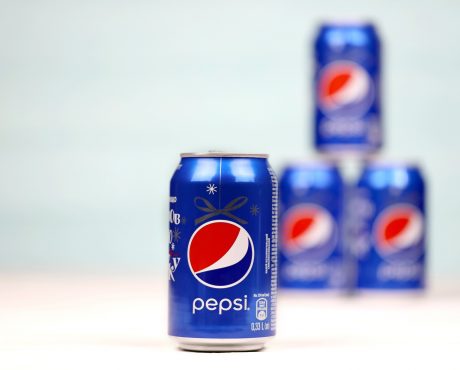PEP Stock Remains a Top Pick for Dividend Investors
In a world of soaring tickers, dividend announcements often get ignored. After all, if you can earn a double-digit profit from one upswing in a company’s share price, who cares about a few percentages of dividend yield?
However, when a company has the ability to increase its dividend payment to shareholders year after year for a long time, it’s often a sign of durable competitive advantage. And if there’s one thing that every income investor should do, it’s to consider businesses with durable competitive advantages.
And that’s why the latest dividend announcement from PepsiCo, Inc. (NASDAQ:PEP) deserves attention.
On February 11, PepsiCo announced a five-percent increase to its annual dividend rate from $4.09 per share to $4.30 per share, starting with the June payment. (Source: “PepsiCo Reports Fourth Quarter and Full-Year 2020 Results; Provides 2021 Financial Outlook,” PepsiCo, Inc., February 11, 2021.)
That gives PepsiCo stock a forward dividend yield of just over three percent at the current share price.
Here’s the more important part: the announcement marked the company’s 49th consecutive annual dividend hike.
In other words, if PepsiCo, Inc. continues its track record for another year, it will become a Dividend King—a title reserved for companies that have increased their payouts for at least 50 consecutive years.
Half a century of yearly pay raises to shareholders is no easy feat. Among the thousands of companies that trade on U.S. stock exchanges, there are only 31 Dividend Kings at the time of this writing.
Of course, track records—however impressive they are—represent past performance. And past performance is no guarantee of future results. But as I mentioned earlier, this kind of track record is often a sign of a durable competitive advantage.
Indeed, PepsiCo’s competitive advantage is extremely durable. It has 23 brands that generate more than $1.0 billion each in estimated annual retail sales. Its products are consumed more than one billion times a day in more than 200 countries and territories around the world. (Source: “About the Company,” PepsiCo, Inc., last accessed April 15, 2021.)
The key is that people purchase PepsiCo’s products on a regular basis. And I’m not just talking about “Pepsi” cola and “Lay’s” potato chips. The company also offers products like “Quaker” oats and “Tropicana” orange juice, which have become staples at many households’ breakfast tables.
Simply put, the company runs a massive recurring business.
The best part is, that business is still growing. In 2020, PepsiCo generated $70.4 billion of net revenue, which represented a 4.8% increase year-over-year. After adjusting for foreign-exchange translation—as well as the impacts of acquisitions, divestitures, and other structural changes—PepsiCo, Inc.’s organic revenue growth in 2020 was 4.3%. (Source: Ibid.)
However you look at it, the company’s top-line performance was strong, especially if you take into account how much the COVID-19 pandemic impacted the global economy last year.
The company’s bottom line improved as well. In 2020, PepsiCo, Inc.’s core earnings came in at $5.52 per share, representing a two-percent increase on a constant-currency basis. Considering that the company declared total dividends of $4.0225 per share last year, its core earnings covered the payout with ease.
While the world economy still faces uncertainty at the moment, PepsiCo’s business is expected to continue to thrive. For 2021, management is projecting a mid-single-digit increase in the company’s organic revenue and a high-single-digit increase in core constant-currency earnings per share.
Regarding the future deployment of capital, here’s what PepsiCo’s chief financial officer, Hugh F. Johnston, said in the company’s latest earnings conference call: “Overall, our capital allocation strategy hasn’t changed. We talked about this many times. Number one, make sure that we fund the business to compete and grow; number two is dividend; number three is tuck-in [mergers and acquisitions]; and number four is share repurchase.” (Source: “Edited Transcript: PEP.OQ – Q4 2020 PepsiCo Inc Earnings Call,” PepsiCo, Inc., February 11, 2021.)
Johnston added that management doesn’t expect much merger-and-acquisition activity this year, and that share repurchases won’t be significant. Those decisions were based on the level of PepsiCo’s merger-and-acquisition activity over the last several years, as well as on the company’s goal of balancing its debt rating versus cash returns to shareholders.
Bottom Line on PepsiCo, Inc.
Put everything together and it’s easy to see what’s going to happen next.
As just mentioned, the amount of money that PepsiCo, Inc. spends on mergers and acquisitions and share repurchases will likely be small this year. So the focus—in terms of capital allocation—is to keep growing the business and paying dividends. Come February next year, I expect the company to announce its 50th consecutive annual dividend increase to PEP stock investors.
